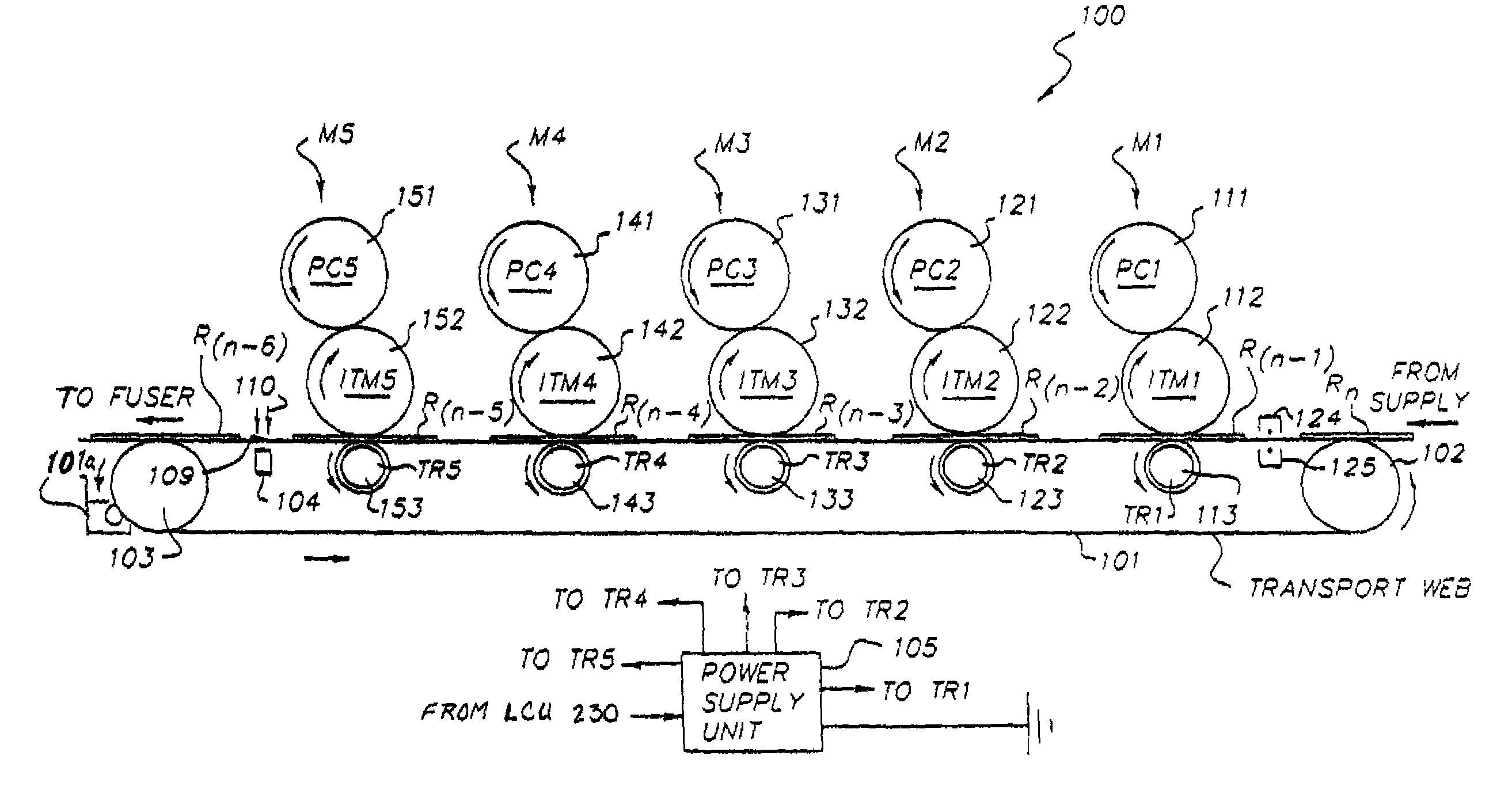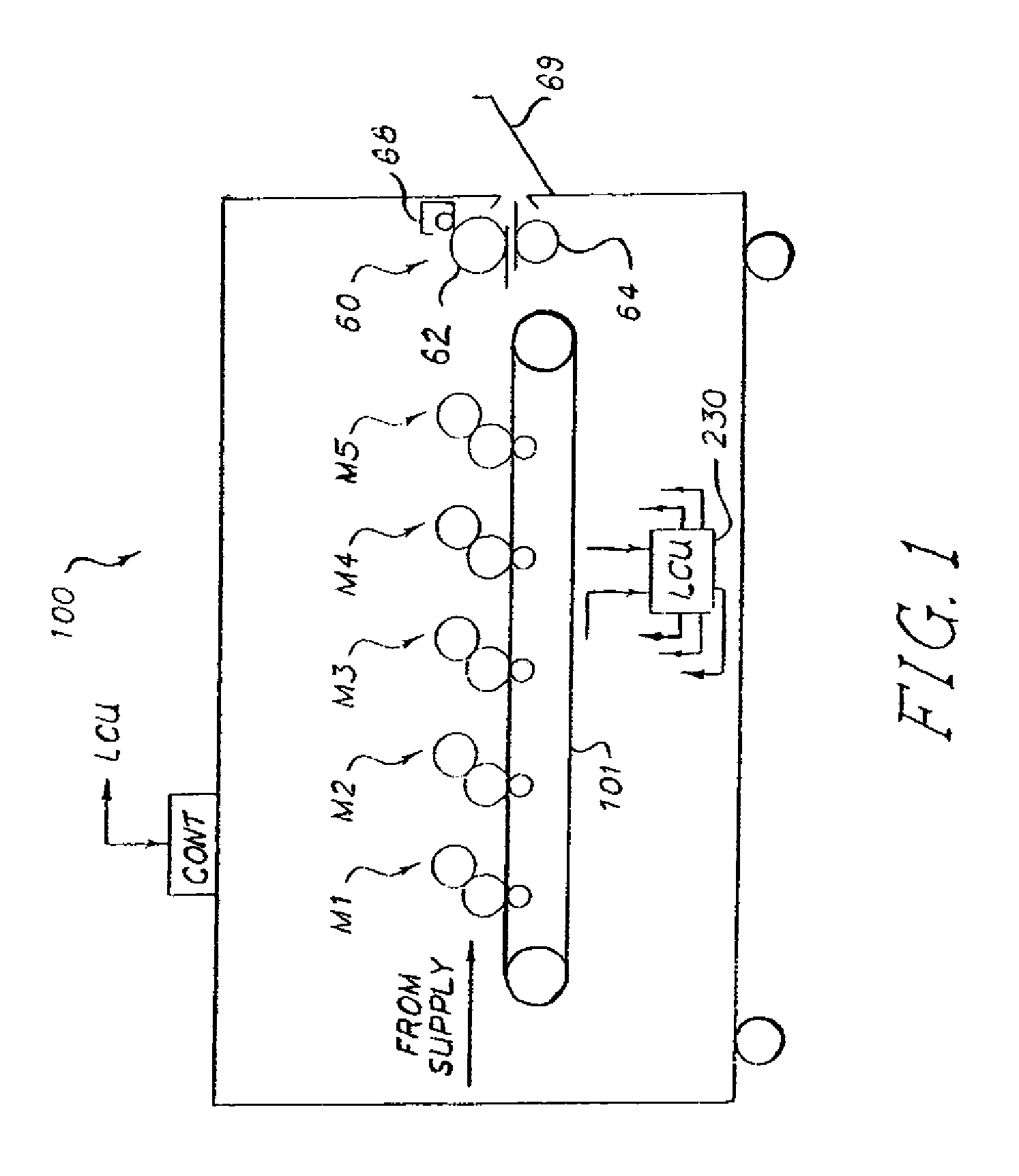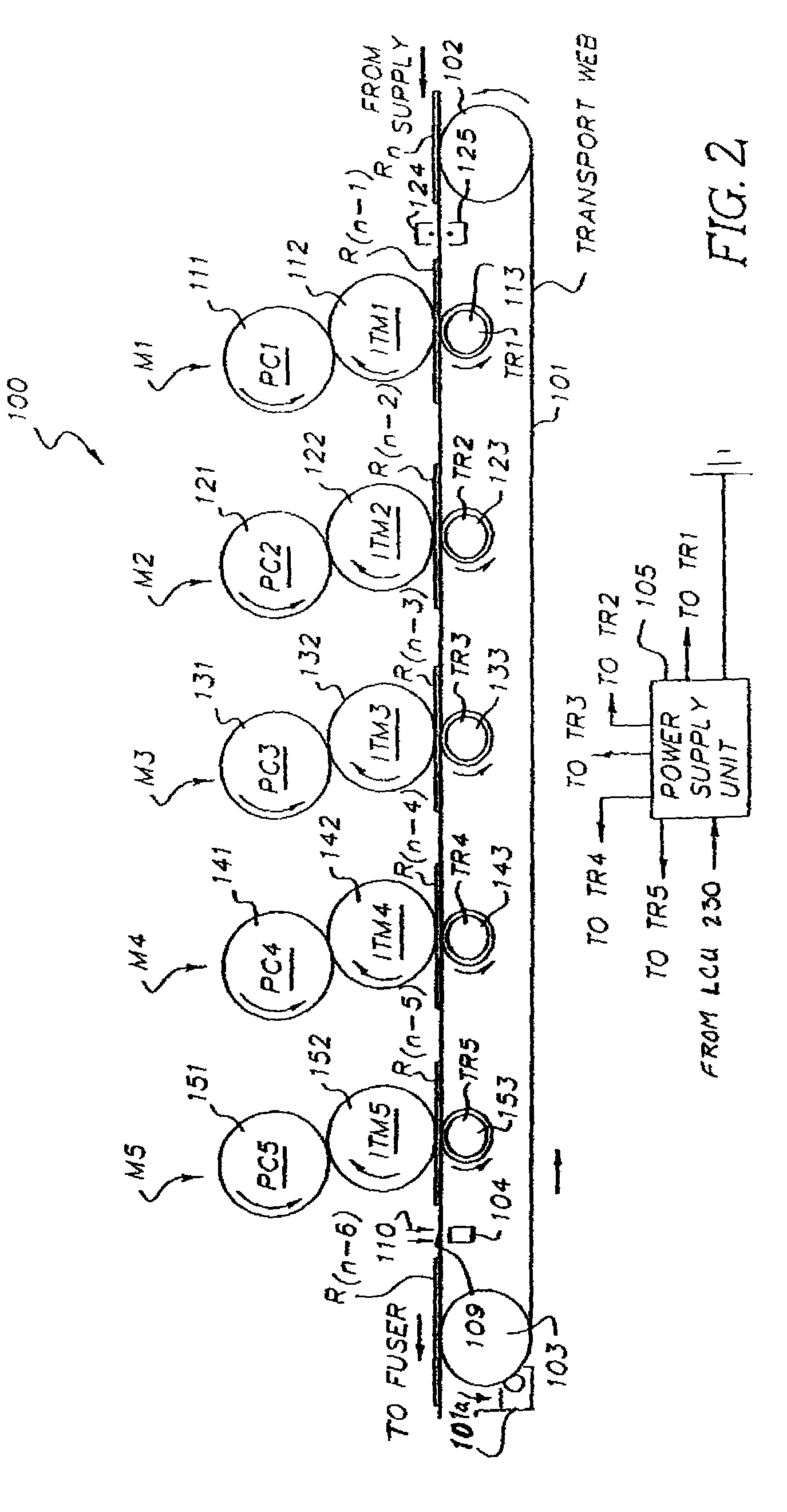Toner composition for preventing image blocking
a technology of toner composition and image blockage, applied in the field of toner and developer, can solve the problems of insufficient polymer flow, inability to achieve the necessary fixing, and limited color printing, and achieve the effect of improving the sticking resistance of toner images
- Summary
- Abstract
- Description
- Claims
- Application Information
AI Technical Summary
Benefits of technology
Problems solved by technology
Method used
Image
Examples
Embodiment Construction
[0026]In electrophotography, once the latent image has been developed and the developed image is then transferred to the substrate, it needs to be fixed in order for it to be well adhered to the substrate. This can be done by a number of means such as radiant heating or by passing the image through a pair of heated rollers. Of these, a pair of heated rollers is the most commonly used method for fixing an image. Generally, one of the rollers is heated to a higher temperature and may have an optional release fluid applied to its surface. The typical viscosity of the release fluid ranges from 200 cSt to 100,000 cSt at room temperature. For high-speed color applications, release fluid viscosity applied to this roller is typically less than 1000 cSt. This roller is usually referred to as the fuser roller. The other roller is typically heated to a much lower temperature and usually serves the function of applying pressure to the nip as the unfused image is passed through the nip of the tw...
PUM
| Property | Measurement | Unit |
|---|---|---|
| glass transition temperature | aaaaa | aaaaa |
| polydispersity | aaaaa | aaaaa |
| volume average particle size | aaaaa | aaaaa |
Abstract
Description
Claims
Application Information
 Login to View More
Login to View More - R&D
- Intellectual Property
- Life Sciences
- Materials
- Tech Scout
- Unparalleled Data Quality
- Higher Quality Content
- 60% Fewer Hallucinations
Browse by: Latest US Patents, China's latest patents, Technical Efficacy Thesaurus, Application Domain, Technology Topic, Popular Technical Reports.
© 2025 PatSnap. All rights reserved.Legal|Privacy policy|Modern Slavery Act Transparency Statement|Sitemap|About US| Contact US: help@patsnap.com



